ʻŌhiʻa Lehua
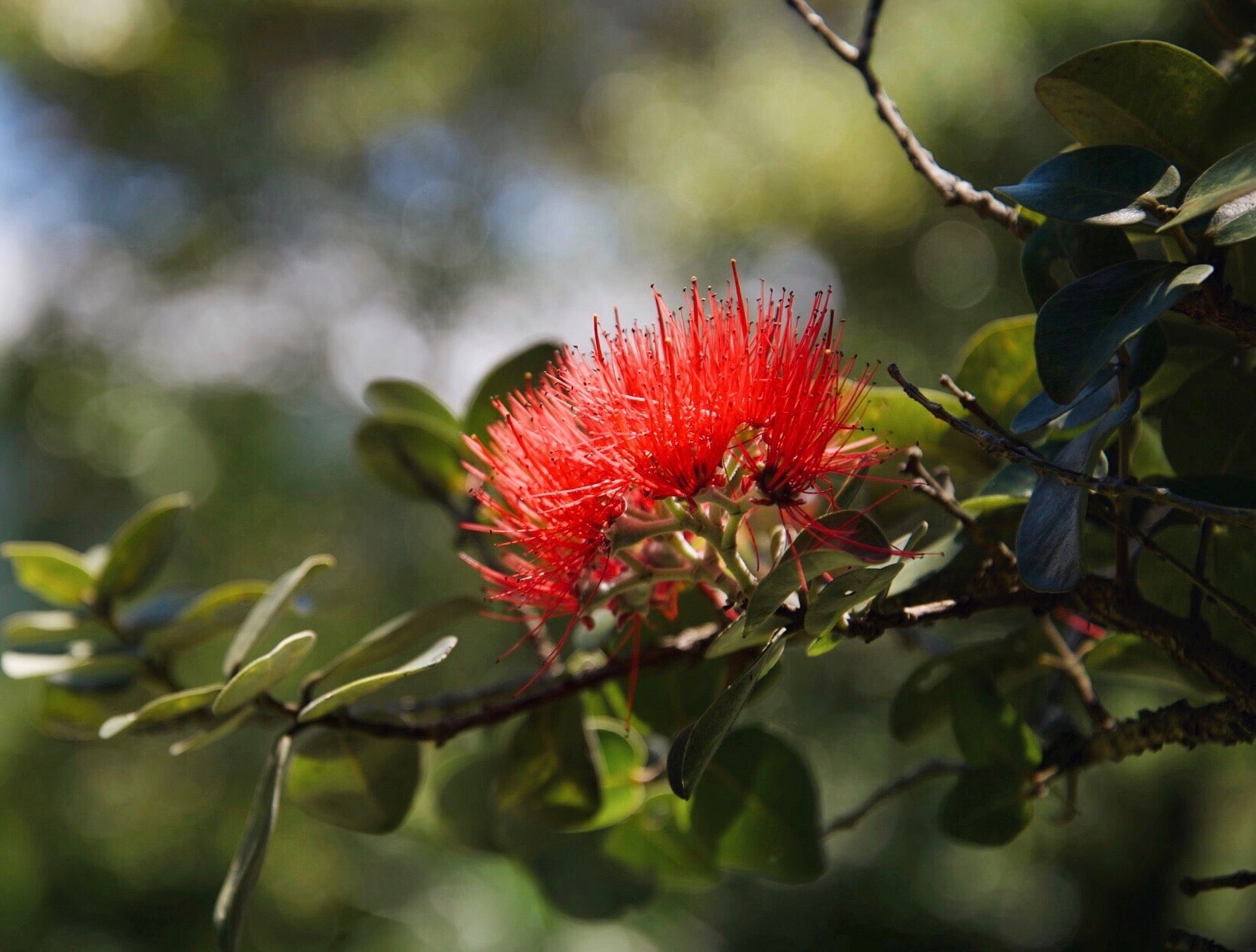
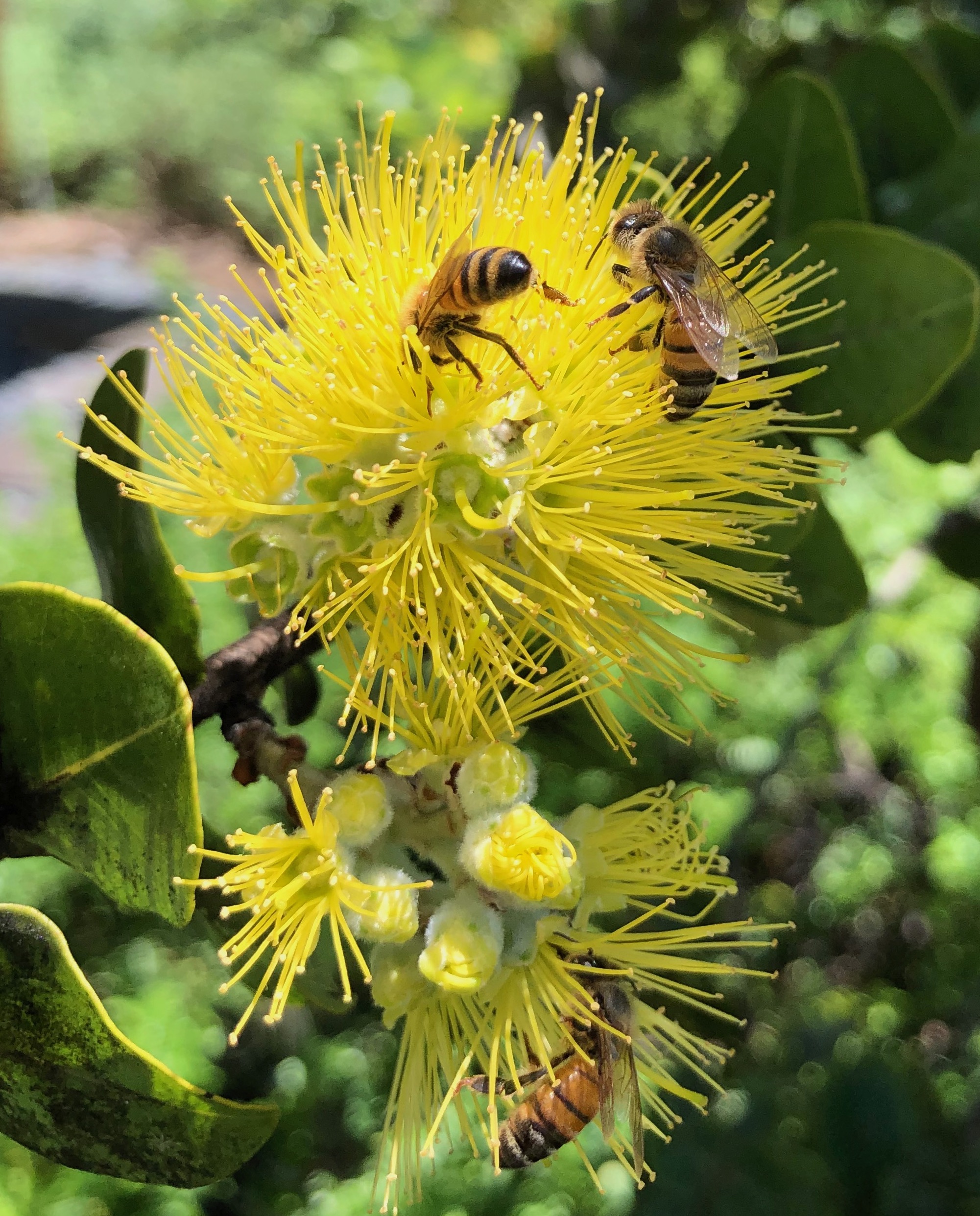
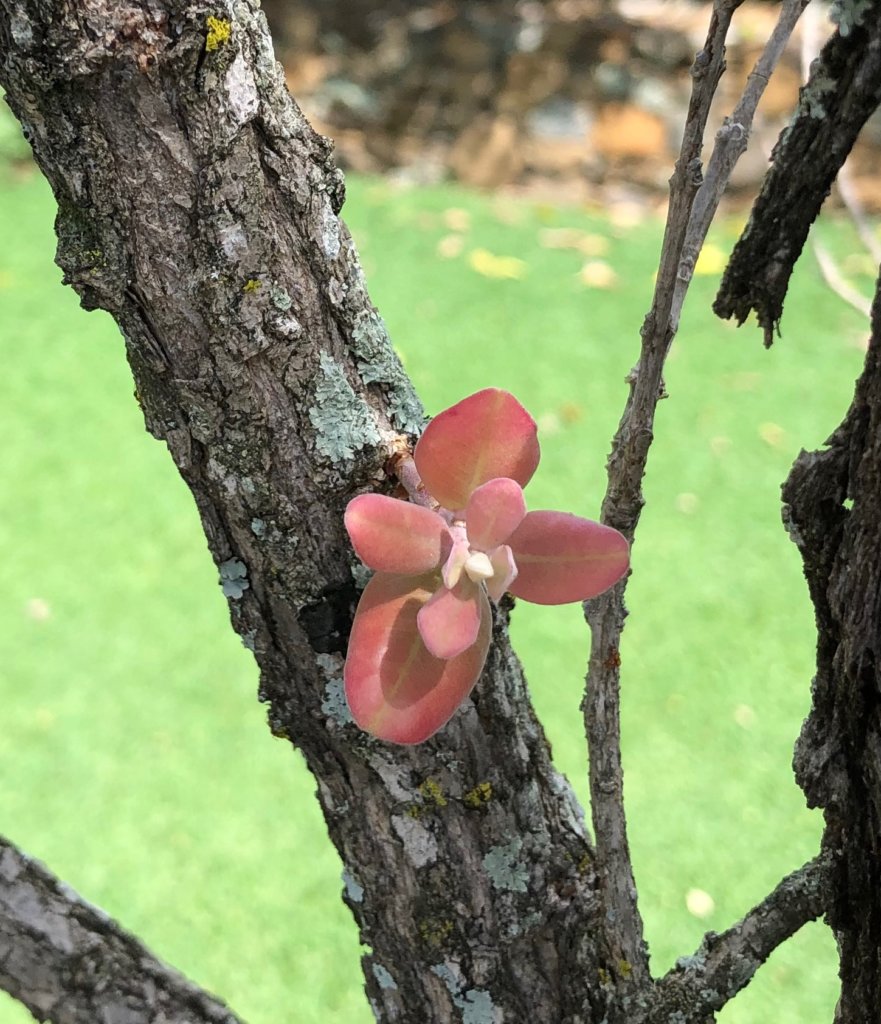
Metrosideros sp.
Native Endemic
One of the most important trees in Hawaiʻi, the ʻōhiʻa lehua makes up around 80% of our native forests providing food and shelter for many animals and insects such as native birds like the ʻiʻiwi and ʻapapane (honeycreepers) and the endangered ʻākepa along with our native land snails or kāhuli. They also capture mist and rainwater helping to replenish our aquifers, aid in soil development, help prevent erosion, provide a habitat for seedlings to develop, and are the first to grow on recent lava flows. ʻŌhiʻa trees are the definition of a keystone species, they are the glue that holds our native ecosystems together and without them, these habitats would change drastically or even cease to exist entirely.
ʻŌhiʻa can be found on 6 of the main Hawaiian islands: Kauaʻi, Oʻahu, Molokaʻi, Lānaʻi, Maui, and Hawaiʻi in numerous environments from coastlines to windy mountain ridges. There are 5 species of ʻōhiʻa. Metrosideros polymorpha is the most common, most variable, and can be found on all islands; Metrosideros tremuloides (lehua ʻāhihi), Metrosideros macropus, and Metrosideros rugosa (lehua papa) are found only on Oʻahu; and Metrosideros waialeale is found only on Kauaʻi.
ʻŌhiʻa liko (new leaf growth) can range in color from yellow to red to even pink and purple. Flowers also come in a variety of colors including dark red (lehua ʻapane), red (ʻōhiʻa ʻulaʻula), orange (lehua ʻalani), yellow (lehua mamo), light yellow (lehua hālena), pale (lehua puakea), cream (lehua haʻakea), and clear white (lehua kea)
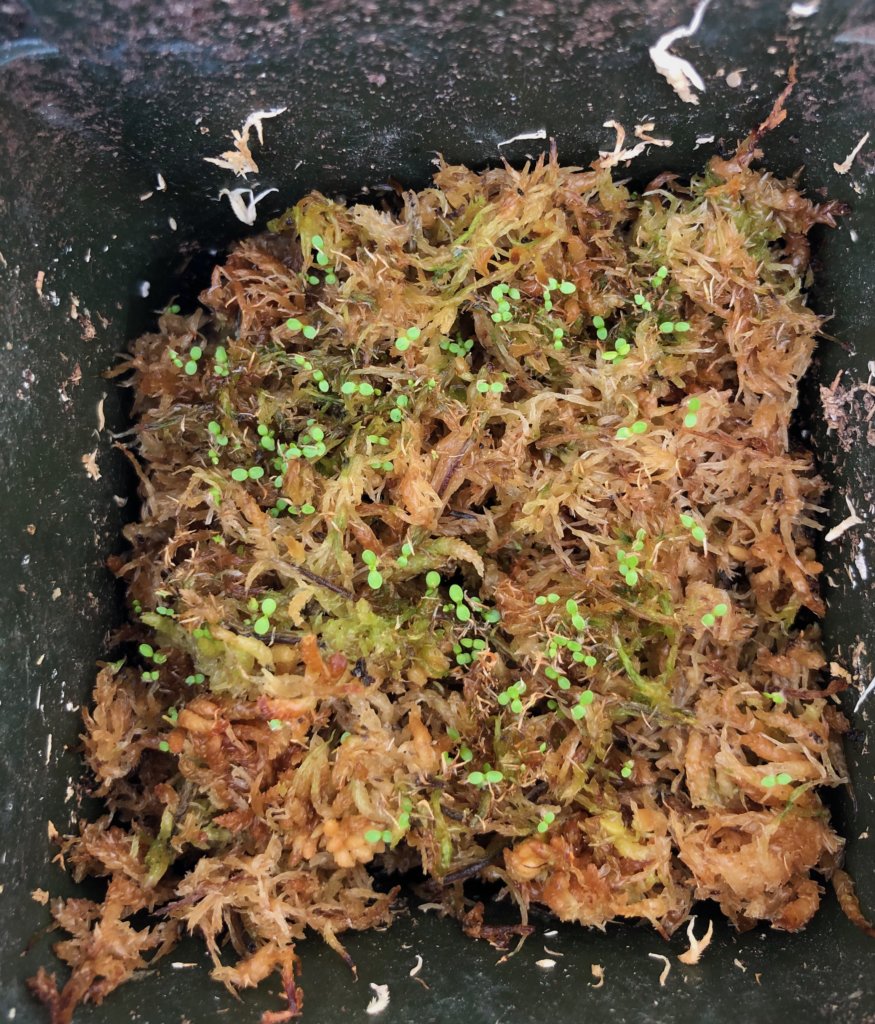
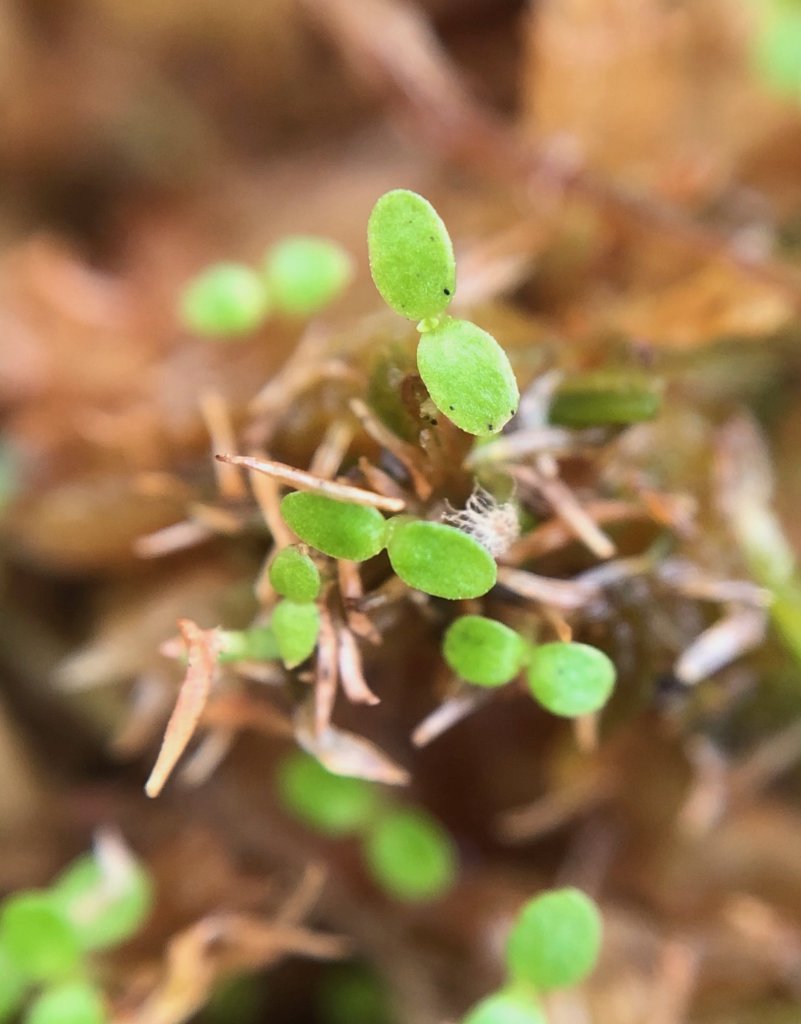
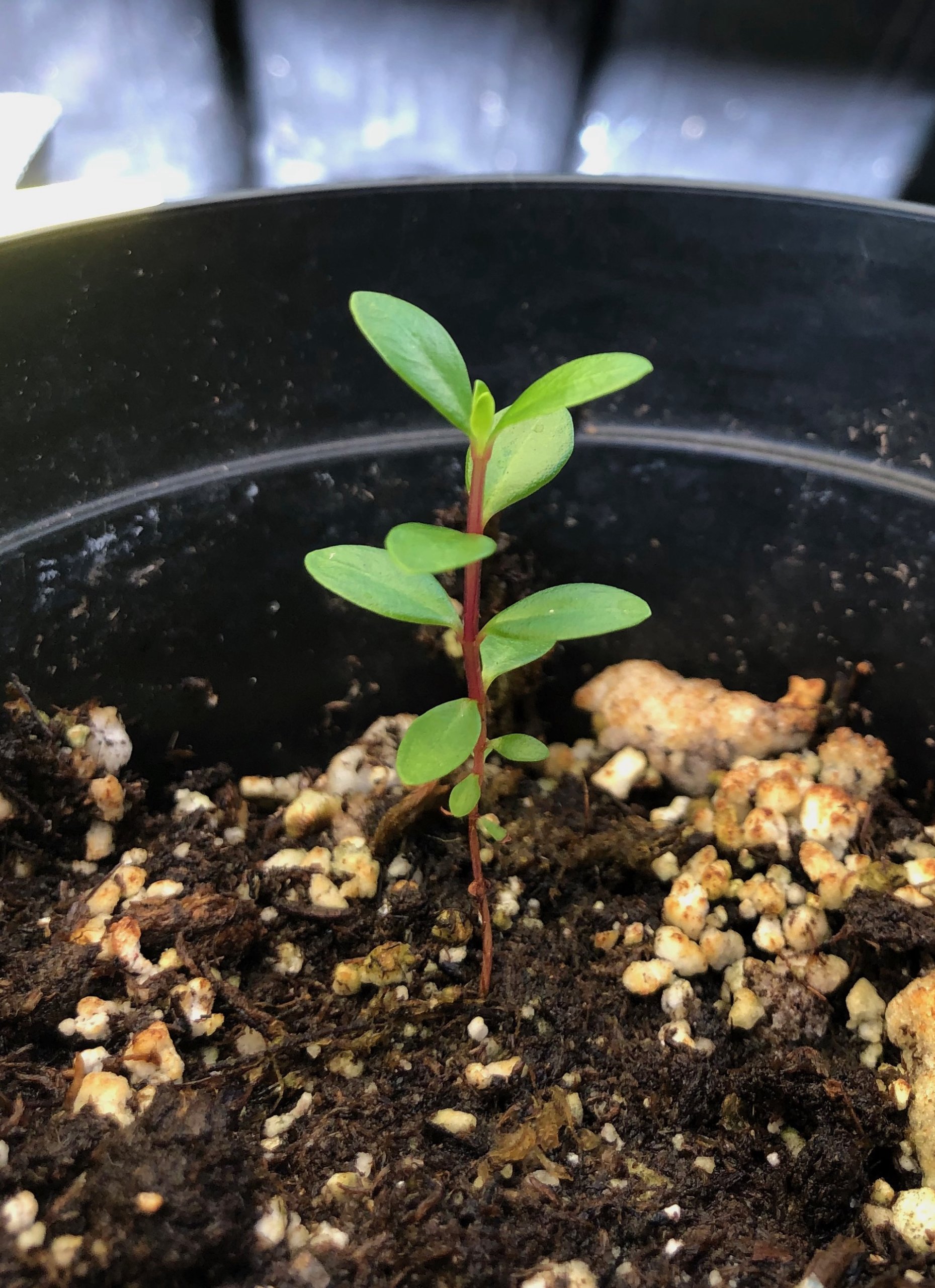
Like many other native plants, ʻōhiʻa is very slow growing which is what makes it easy for invasive species to take over. For example, the tiny ʻōhiʻa sprouts (L) are about 1 and a half months old. The bigger ʻōhiʻa keiki (R) is around 9 months old.
Uses
The hardwood of the ʻōhiʻa was used for many things in early Hawaiʻi including kapa beaters and prepping boards (lāʻau kahi wauke), poi boards (papa kuʻi poi), dancing sticks (kālāʻau), idols (kiʻi), mallets, clubs (lāʻau), and daggers (pāhoa). It was used in house construction, for the interior framework of canoes, and was a superior firewood. Today, ʻōhiʻa wood is prized for flooring, furniture, decor, and carving.
Flowers, buds, seed capsules, liko (new leaves) can be used to make lei and adorn hula altars since Hiʻiaka, the goddess of hula is also the goddess of the ʻōhiʻa forests. ʻŌhiʻa trees and forests are also considered to be sacred to Pele, the volcano goddess, and Laka goddess of hula.
ʻŌhiʻa flowers mixed with water and the inner bark of hau can be given to women when labor pains are intense. Liko combined with lama leaves, leaf buds, and flowers, and poi from kalo lehua can be given to children with thrush. Pounded liko, sometimes chewed by the mother first, can be used to stimulate appetite and digestion in weakened children. Aerial roots (aʻa lewa) can also be used to stimulate appetite. Leaves can be used for tea.*
Classed as a honey plant because of the abundance of nectar in its flowers, ʻōhiʻa honey (meli) is said to have a unique flavor.
*Information found on this website is meant for educational purposes only. It is not meant to diagnose medical conditions, treat any medical conditions, or prescribe medicine.